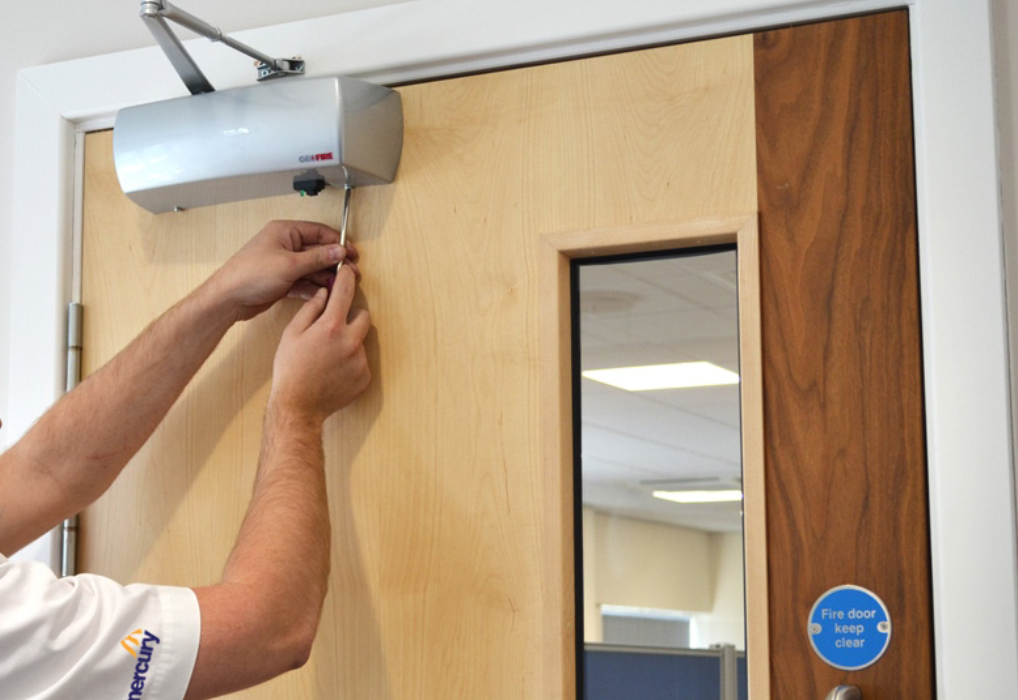
The best ways to maintain fire safety in schools
An active educational environment can have many hidden risks and with a varied amount of staff, students and visitors coming in and out of the building every day; making sure the correct fire and safety procedures are in place is vital. Having updated plans and systems in place in the event of a fire will help keep Schools covered, and this blog aims to highlight the key-ways schools can maintain fire safety in a learning environment.
Consistency
Firstly, you may have heard the saying “Consistency is key” and when it comes to fire safety, this really is the case. Having a set date and rules in place for regular checks will keep all schools covered. These dates should be set and updated within a fire safety logbook, which will detail all the systems used to keep the building prepared in the event of a fire. This will also correctly prepare Schools for a visit from the local fire officer. Some serious breaches of the Regulatory Reform (Fire Safety) Order 2005 has led to huge fines seen at an Independent school. The unnamed school were fined £50,000 as 15 fire safety regulations were broken. Making sure schools have the evidence of regular checks will avoid these breaches of legislation.
Consistently giving out information regarding the premises will give everyone in the school an understanding of the procedures. Having a fire warden present at all times is advised, but we understand that this is unrealistic, especially when adult learning, sporting activities, meetings and conferences often happen out of school hours. Consistently informing these attendees of the evacuation points and what to do in the event of a fire emergency is crucial and must be consistently reinforced.
Fire training
As mentioned above, making sure everyone is aware of the school’s fire procedure is very important. But, training people correctly so they can confidently inform pupils, staff and visitors of these measures is also key.
Having fire wardens on hand to work and maintain fire safety in the event of a fire is a compulsory position to fill. Students will look to these individuals in fire emergencies and having someone who can effectively follow procedure and calm the students, is an important role.
Making sure the school has provisions in place for fire wardens that include situations of sickness and holiday is advised. If a rota is created for this reason, it will clarify to everyone in the premises who is in charge in the event of a fire.
Having the correct training for this individual is a legal requirement as per the Regulatory Reform (Fire Safety) Order 2005 and employees should be able to:
- Understand the fire safety plan when alerted.
- Avoid hazards effectively
- Carry out safe evacuation of the school premises.
Fire risk assessment
As you probably already know, all schools should have a fire risk assessment. This element makes up the foundations of any fire a safety plan and is imperative to any building.
This assessment will cover a variety of important questions that need to be tailored around the building’s uses and the surrounding environment. It will need to include:
- An understanding of what a ‘fire risk’ is.
- Evaluation of ‘who’ is at risk.
- Details of how to record all findings from training and drills.
- An understanding of the evacuation plan.
- A Review of risk assessments.
If you’re able to identify all these elements, you should have everything covered. We would also recommend getting a specialist in to review your risk assessment, just to make sure you’re fully protected.
Actively avoiding risk
Working to avoid any fire hazards should be a top priority and there are some simple things you can do to achieve this. Although most fires are started accidentally, there are plenty of cases where school fires were started deliberately. Keeping items such as combustibles and flammables out of sight and reach would be a great way to reduce sources of ignition.
Another source of ignition can come from waste. Waste consumption rates in schools are always high and making sure this waste is disposed of accordingly could help minimise fire risks. Having a correct process in place to remove combustible items will help distance them from potential fuel sources such as electrics within science departments for example.
Regular checks and assistance from third parties
Managing a school’s fire safety can be overwhelming and having a third party to check systems such as fire doors, maintenance and fire stopping schemes can help develop and maintain the buildings fire safety. Mercury Construction are certified to carry out fire door maintenance surveys and remedial works.
Fire doors are an integral part to all school’s safety and having these maintained is vital. Mercury Construction are BM TRADA Q-Mark certified fire door installers. This ensures schools and universities fire systems are installed correctly and will perform as intended. We work closely with industry standards to make sure buildings are fully protected in the event of a fire. Minimising risk and increasing school’s safety is an integral part to what we do.
If you’re looking for support with your passive fire doors and systems, please give us a call or contact us using our contact form.
